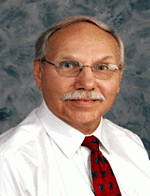Obesogens: A unifying theory for the global rise in obesity
1:00 pm US Eastern Time
Slides & Resources
Slides
Jerry Heindel: The Obesogen Model as a Unifying Theory for the Global Rise in Obesity.
Related webinars
Obesogens and the Obesity Pandemic: A focus on prevention, EDC Strategies Partnership webinar, May 2022
Do chemicals in plastic consumer products contribute to obesity?, EDC Strategies Partnership webinar, April 2022
Resources
CHE blog from Dr. Heindel, March 2024: Untangling the causes of obesity
Heindel, J. et al, 2024. Obesogens: A unifying theory for the global rise in obesity, International Journal of Obesity.
Heindel, J. 2024. Untangling the Causes of Obesity. CHE blog post, March 18, 2024.
Heindel, J. et al. 2019. The developmental basis of disease: update on environmental exposures and animal models. Basic Clin Pharmacol Toxicol. 3:5–13.
Heindel, J. et al. Obesity II: establishing causal links between chemical exposures and obesity. Biochem Pharmacol. 2022;199:115015.
Download our Webinar Highlights fact sheet for key findings and quotes from this webinar.
Despite varied treatment, mitigation, and prevention efforts, the prevalence and severity of obesity continue to rise around the world. In this EDC Strategies Partnership webinar, Dr. Jerry Heindel presented a combined model of obesity causation that links four general models to create a unifying paradigm.
The four models include the energy balance model (EBM), based on calories as the driver of weight gain; the carbohydrate-insulin model (CIM), based on insulin as a driver of energy storage; the oxidation-reduction model (REDOX), based on reactive oxygen species (ROS) as a driver of altered metabolic signaling; and the obesogens model (OBS), which proposes that environmental chemicals interfere with hormonal signaling leading to adiposity.
Dr. Heindel presented a combined OBS/REDOX model in which environmental chemicals present in the air, food, food packaging, and household products generate false autocrine and endocrine metabolic signals. These signals then subvert standard mechanisms of energy regulation, increase basal and stimulated insulin secretion, disrupt energy efficiency, and influence appetite and energy expenditure leading to weight gain.
This combined model incorporates the data supporting the EBM and CIM models, thus creating one integrated model that covers significant aspects of all the mechanisms that are potentially contributing to the obesity pandemic. Importantly, the OBS/REDOX model provides a rationale and approach for future preventative efforts based on environmental chemical exposure reduction.
Coauthors Dr. Robert Lustig and Dr. Barbara Corkey joined for the Q&A portion of the discussion.
This webinar was moderated by Sharyle Patton, Director of Commonweal's Biomonitoring Resource Center.
Featured Speaker
 Jerrold (Jerry) J. Heindel has a Ph.D. in Biochemistry from the University of Michigan and worked in reproductive biology and toxicology at the University of Texas Medical School at Houston and the University of Mississippi. He moved to the National Institute of Environmental Health Sciences (NIEHS) and headed their Reproductive and Developmental Toxicology group. He then moved to the Division of Extramural Research and Training at NIEHS. He was responsible for developing and administering the NIEHS grants program in endocrine disruption, the developmental basis of diseases and obesity and diabetes for over 25 years. He is now retired from NIEHS and is currently the director of the Environmental Health Sciences Program, Healthy Environment and Endocrine Disruptor Strategies, www.heeds.org.
Jerrold (Jerry) J. Heindel has a Ph.D. in Biochemistry from the University of Michigan and worked in reproductive biology and toxicology at the University of Texas Medical School at Houston and the University of Mississippi. He moved to the National Institute of Environmental Health Sciences (NIEHS) and headed their Reproductive and Developmental Toxicology group. He then moved to the Division of Extramural Research and Training at NIEHS. He was responsible for developing and administering the NIEHS grants program in endocrine disruption, the developmental basis of diseases and obesity and diabetes for over 25 years. He is now retired from NIEHS and is currently the director of the Environmental Health Sciences Program, Healthy Environment and Endocrine Disruptor Strategies, www.heeds.org.
This webinar was hosted by the EDC Strategies Partnership, which is co-chaired by Sharyle Patton (Commonweal Biomonitoring Resource Center), Jerry Heindel and Sarah Howard (Environmental Health Sciences' Healthy Environment and Endocrine Disruptor Strategies, HEEDS), Génon Jensen (Health and Environment Alliance, HEAL), and Rachel Massey (Collaborative for Health and Environment, CHE). To see a full list of past calls and webinars related to EDCs and listen to or view recordings, please visit our partnership page.


